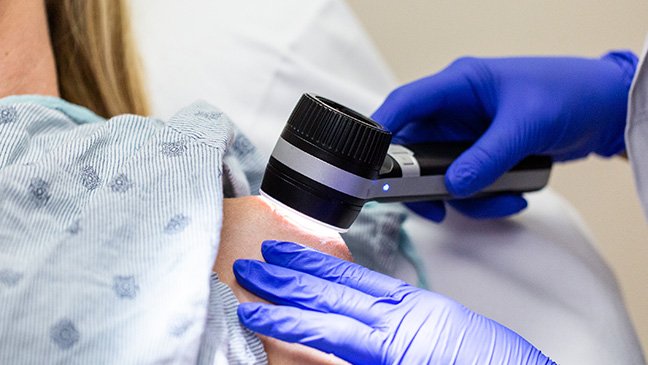- Diseases
- Acoustic Neuroma (16)
- Adrenal Gland Tumor (24)
- Anal Cancer (70)
- Anemia (2)
- Appendix Cancer (18)
- Bile Duct Cancer (26)
- Bladder Cancer (74)
- Brain Metastases (28)
- Brain Tumor (234)
- Breast Cancer (726)
- Breast Implant-Associated Anaplastic Large Cell Lymphoma (2)
- Cancer of Unknown Primary (4)
- Carcinoid Tumor (8)
- Cervical Cancer (164)
- Colon Cancer (168)
- Colorectal Cancer (118)
- Endocrine Tumor (4)
- Esophageal Cancer (44)
- Eye Cancer (36)
- Fallopian Tube Cancer (8)
- Germ Cell Tumor (4)
- Gestational Trophoblastic Disease (2)
- Head and Neck Cancer (14)
- Kidney Cancer (130)
- Leukemia (342)
- Liver Cancer (50)
- Lung Cancer (286)
- Lymphoma (278)
- Mesothelioma (14)
- Metastasis (30)
- Multiple Myeloma (100)
- Myelodysplastic Syndrome (60)
- Myeloproliferative Neoplasm (6)
- Neuroendocrine Tumors (16)
- Oral Cancer (102)
- Ovarian Cancer (178)
- Pancreatic Cancer (160)
- Parathyroid Disease (2)
- Penile Cancer (14)
- Pituitary Tumor (6)
- Prostate Cancer (150)
- Rectal Cancer (58)
- Renal Medullary Carcinoma (6)
- Salivary Gland Cancer (14)
- Sarcoma (238)
- Skin Cancer (300)
- Skull Base Tumors (56)
- Spinal Tumor (12)
- Stomach Cancer (66)
- Testicular Cancer (28)
- Throat Cancer (92)
- Thymoma (6)
- Thyroid Cancer (100)
- Tonsil Cancer (30)
- Uterine Cancer (86)
- Vaginal Cancer (18)
- Vulvar Cancer (22)
- Cancer Topic
- Adolescent and Young Adult Cancer Issues (22)
- Advance Care Planning (12)
- Biostatistics (2)
- Blood Donation (18)
- Bone Health (8)
- COVID-19 (360)
- Cancer Recurrence (120)
- Childhood Cancer Issues (120)
- Clinical Trials (628)
- Complementary Integrative Medicine (22)
- Cytogenetics (2)
- DNA Methylation (4)
- Diagnosis (238)
- Epigenetics (6)
- Fertility (62)
- Follow-up Guidelines (2)
- Health Disparities (14)
- Hereditary Cancer Syndromes (128)
- Immunology (18)
- Li-Fraumeni Syndrome (8)
- Mental Health (122)
- Molecular Diagnostics (8)
- Pain Management (62)
- Palliative Care (8)
- Pathology (10)
- Physical Therapy (18)
- Pregnancy (18)
- Prevention (936)
- Research (390)
- Second Opinion (78)
- Sexuality (16)
- Side Effects (616)
- Sleep Disorders (10)
- Stem Cell Transplantation Cellular Therapy (216)
- Support (408)
- Survivorship (328)
- Symptoms (182)
- Treatment (1788)
What to expect when you have a mole removed
4 minute read | Published April 18, 2025
Medically Reviewed | Last reviewed by Saira George, M.D., on April 18, 2025
Moles are common growths on the skin. Moles are benign, which means they’re not cancerous. But when melanocytes, the cells that make up moles, turn cancerous, we call that melanoma.
Melanomas can develop within a mole you’ve had for a long time or show up as a new mole. In both cases, the mole can look unusual; it doesn’t look like your other moles or is changing and/or growing in an unusual way.
Your dermatologist may find an abnormal mole during a skin cancer screening exam. To determine if a mole is cancerous, your dermatologist will send the mole for a biopsy. A skin biopsy is usually a quick, straightforward procedure.
You should check your skin regularly before visiting your dermatologist for a skin cancer screening.
Use the ABCDEs of melanoma to do a skin self-check
Before your appointment, examine your moles by doing a skin self-exam. Use the ABCDE guide for melanoma and note any of the following skin cancer symptoms so you can point them out to your dermatologist.
- Asymmetry: The two sides of the mole look different from each other.
- Border: The mole’s border is crooked, jagged or irregular.
- Color: The mole is multi-colored.
- Diameter: The width is more than 6 millimeters, which is about the size of a pencil eraser.
- Evolution: The mole has changed in size, shape or feeling.
Be sure to point out any moles that are ugly ducklings. These moles look different from your other moles, or they have grown or changed noticeably. It’s a red flag if you’ve had a mole for a long time that suddenly starts changing, or if you have a new mole that changes and grows. Normal moles typically look like your other moles and are very slow to grow or change.
What happens during a dermatologist's exam
During the appointment, your dermatologist will look for any abnormal moles. If an abnormal mole is noted on exam, your dermatologist may recommend either monitoring it closely for any changes or removing it for a biopsy.
Monitoring moles
Atypical moles are moles that look a little unusual but aren’t melanoma. If an atypical mole is flat, hasn’t changed and doesn’t look concerning for melanoma, your dermatologist may suggest short-term monitoring. That means they’ll check it again in a few months to make sure it isn’t growing or changing. The longer it’s stable and not changing, the less likely it is to be cancerous.
Biopsying a mole
If a mole looks concerning, a biopsy is done so that the mole’s cells can be examined further under a microscope. Getting a close-up view of how the cells in the mole look and are arranged allows the pathologist to determine if the mole’s cells are cancerous.
First, your dermatologist will give you a numbing injection near the mole. This may pinch a little, but it should keep you from feeling any pain during the removal. Your dermatologist will select the biopsy technique based on the type of mole and the amount of tissue sample the pathologist will need to make a diagnosis. Your dermatologist may use the following techniques to remove the mole:
- Shave biopsy – A razor blade is used to shave off the mole.
- Punch biopsy – A punch tool is placed over the mole and used to “punch” out the mole.
- Excisional biopsy – A scalpel is used to remove the mole, and stitches are used to help the skin heal.
These are all minor surgical procedures. The process is similar if a mole is removed for cosmetic reasons or because it bothers you. Dermatologists use cryotherapy and laser treatments to remove other growths, but they don’t usually remove moles that way because they can’t biopsy them. Any time a mole is removed, it’s important to check that the cells are normal. That’s because if the mole comes back and is melanoma, we’ve delayed diagnosis and treatment.
Don’t try to remove moles at home
I do not recommend trying to remove moles yourself. Often, people confuse moles with seborrheic keratoses or skin tags, which are benign skin growths. Real moles are not very easy to remove; you’d have to cut them out or destroy the skin where the mole lives. You have an increased risk of pain and major scarring. Additionally, you will have no way of knowing if the mole was cancerous or not because it was never sent for biopsy.
Getting your results
After a mole is removed or biopsied, the sample is sent to a pathologist for a closer look. The pathologist will share the results with your dermatologist, and then your dermatologist will go over the results with you. If the cells that make up the mole look normal and healthy, you won’t need any further treatment, and your dermatologist will help you determine when your next skin screening should be.
If the cells that make up the mole appear very abnormal or cancerous, your dermatologist will help figure out your next steps.
Having a mole biopsied is a simple, low-risk procedure. It may leave a small scar. But a biopsy scar is usually worth the peace of mind of knowing if an abnormal mole is melanoma.
Saira George, M.D., is a dermatologist at MD Anderson in Sugar Land.
Request an appointment at MD Anderson online or call 1-877-632-6789.

Having a mole biopsied is a simple, low-risk procedure.
Saira George, M.D.
Physician





